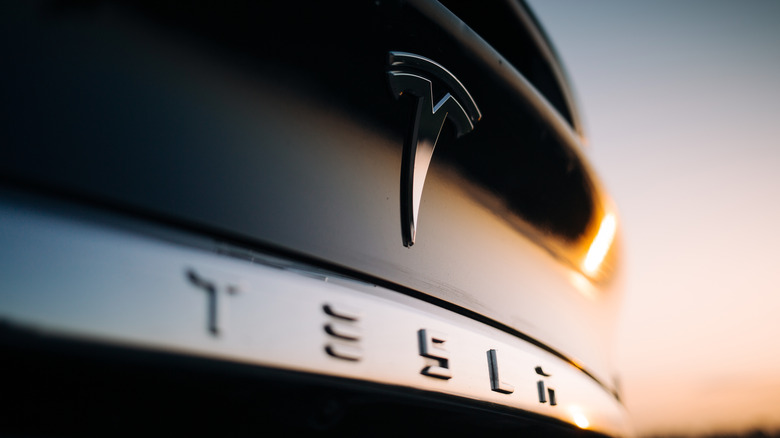Tesla Model Y And Model 3 Recall Covers 321,000 EVs, But The Fix Is Simple
Tesla has announced a new vehicle recall, and if you feel like you have deja vu, there's a reason: the automaker just recalled close to 30,000 of its Model X cars in the U.S. on Friday. This new recall, which was published only a day later, involves some of the company's Model Y and Model 3 EVs, though it is limited to customers in the United States. If you own a Tesla, you're probably getting used to this sort of announcement.
The automaker is no stranger to recalls, something that has earned the popular EV manufacturer its fair share of criticism. These aren't even the first recalls this month — back on November 8, Elon Musk's company recalled around 40,000 of its EVs in the U.S. because of an issue that could potentially result in loss of power steering. That itself was preceded by a recall of around 24,000 vehicles, though that particular one — which occurred in late October — was unique as far as Tesla recalls go because it required a physical repair (via Reuters). Most Tesla recalls are as simple as connecting to the internet, and this latest one is no exception.
As with most Tesla recalls, the fix is a software update
Though recalls are never a welcomed announcement, they're not much of a nuisance when the vehicle is equipped with built-in connectivity that allows the automaker to push out updates remotely. That's the case this time around, with Tesla saying that it'll issue an OTA update to the recalled Model 3 and Model Y cars in the U.S. to fix an issue involving the tail lights. The recall was published by the NHTSA [PDF] on November 18, though the document shows that it was submitted a few days before that.
According to the advisory, the recall impacts some 2020, 2021, 2022, and 2023 Model Y electric vehicles, as well as some 2023 Model 3 vehicles. The tail lights on these EVs may "intermittently illuminate" in "rare instances," the recall notice explains. Tesla says this issue can impact either tail light or both of them and that it links back to a "firmware anomaly," which is why the fix involves a software update. Luckily, the issue is described as happening only in "rare instances." It's unclear when the firmware update rollout will take place.

